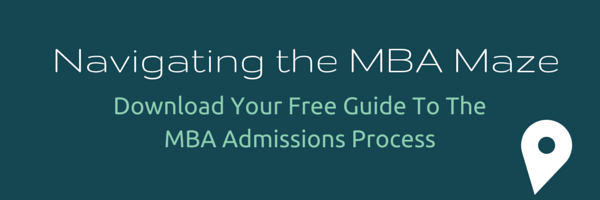 “Choosing and Visiting Business Schools” is the latest post in our series, Navigate the MBA Maze.
“Choosing and Visiting Business Schools” is the latest post in our series, Navigate the MBA Maze.
In deciding whether to apply to specific MBA programs, you need to understand how the schools differ. What are their relative strengths and weaknesses? And it isn’t easy to get a real sense of what makes a school unique: They all claim top faculties, great student bodies, and networks that will sizzle when you graduate. How can you tell the differences between them?
Here are a few points that will help you determine differences between schools:
• The employment profile. See where graduates find jobs. Which schools send the most grads to the companies, industries, and locations you are most interested in?
• The class profile. Do you want a large class or a small, close-knit class? Do you want an urban or rural setting? Do you really want to be in a class that draws over 70% of its students from engineering, business, and technical fields? Or would you prefer to be in a class where 46% came from the social sciences and humanities? Both MIT and Stanford provide outstanding MBA educations, but their class make-up is very different. You may prefer one or the other.
• The curriculum. Would Harvard’s rigid first year curriculum, where everyone takes the same classes, chafe? Or would you be lost with all the options at Chicago, which prides itself on its flexibility? Is the ability to pass out of prerequisites important to you? Do you want a lot of teacher cooperation and integration of business functions, as is provided by Tuck or Yale?
• Methodology. Do you prefer a mix of methodologies? Check out Wharton. Do you seek an emphasis on projects and hands-on learning as at Ross? Do you want strict case method? Take a closer look at HBS and Darden.
• Clubs and extra-curriculars. Many schools have imitated MIT Sloan’s business plan competition. But not everyone has a social enterprise competition (HBS does). If you are interested in social enterprise, that competition may be particularly appealing.
What are some of the unusual clubs at the different schools that you might be interested in? For example almost every school will have a Marketing Club, but only some, like Columbia, will have a Luxury Goods Marketing Club. Again, if this is your interest, the existence and health of that club may be an important attraction for you.
• Professor research. If there is a prof or two researching the niche that appeals to you, he may be the magnet pulling you to that program. Are there independent study opportunities? Does he teach MBA students? What classes?
• “Fit.” Then there is that almost indefinable quality called “fit.” Visit the schools you are considering to determine fit. If visiting isn’t feasible, talk to current students, read MBA student blogs, and follow the student newspapers.
Grasping these points of difference will enable you to make more intelligent application and acceptance decisions.
Finally, here are some visiting-day tips to maximize your school visits:
1. If possible, visit when class is in session. Then, take a tour, meet with students, and attend the info sessions. In short, take advantage of whatever is offered.
2. Prepare for your visit by going through the school’s website thoroughly. It isn’t great when you ask a question that is answered three times on the school’s site.
3. As you go through the school website, write down any questions that you may have and take them with you.
4. If you can’t visit the school, prepare questions to ask at receptions or info sessions that will be held in your city.
• Get Accepted in 2016: 7 Steps to a Strong MBA Application
• 6 Top Tips for Visiting Schools
• How Many B-Schools Should You Apply To?


